Weeder types explained – gardening pros explore 10 types of tool, and reveal which is best for different weed species
With 10 different types of weeder, it's hard to know where to start. I asked the pros about which is the best option for your yard


Weeding is the most basic gardening job after planting. If you want your plants to thrive you need to remove their natural competition.
Humans have been weeding for thousands of years, and that means there are lots of different tools for tackling these unwanted plants. If you're new to gardening or find that your weeder isn't working on the toughest weeds, you may not know the difference between all the different types of weeder.
I spoke to gardening experts about all ten weeder types and their effectiveness on different types of weeds, for varying types of soil, and their suitability for every sort of gardener. Most people can get by with a traditional hand weeder and a patio knife, but serious gardeners need to consider more complicated tools to help them get rid of weeds.
1. Traditional hand weeders work for all weeds
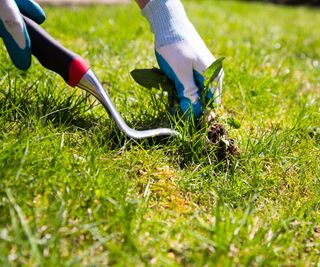
The most common weeder is a traditional hand weeder, sometimes referred to as a weeding fork. These have a short, curved blade for levering weeds out of lawns and flowerbeds. Traditional hand weeders are a classic for a reason and the most effective way to pull weeds out of soil.
However, you need to bend down to use them, and they only pull out weeds one by one. This means that they can be tiring and uncomfortable to use.
Gardening expert Tammy Sons explains 'Throughout my gardening career I've tested nearly every weeding tool available and discovered that each one performs well and badly depending on the specific task. Traditional hand weeders give me precise control to remove weeds from their roots but their use demands bending that becomes exhausting after extended periods.'

Tammy Sons is a horticulture expert, garden writer, and educator. Tammy is the CEO and founder of TN Nursery, an online plant nursery based in Altamont, Tennessee, which has provided plants for the Washington Monument and Arlington National Cemetery.
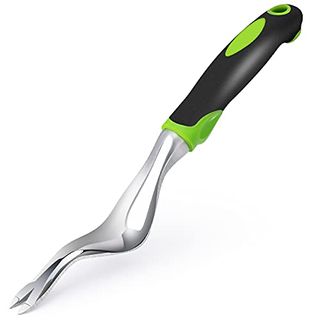
This simple hand weeder is one of the most effective ways to tackle weeds. The curved blade helps you jimmy weeds out of the ground, and it has an ergonomic thumb grip for comfort. Best of all, it's relatively inexpensive.
2. Standing weeders are best for your back
Standing weeders aim to solve the issues of traditional weeder, allowing you to weed from a standing position. This also allows you more leverage on weeds with deep taproots like dandelions. However, these weeders struggle to deal with small weeds and can be a little unwieldy.
Gardening expert Valeria Nyman explains 'Stand-up weeders save your knees and back, which is great for dandelions and deep-rooted invaders, but they are clunky in tight spaces.'
Tammy Sons agrees. 'Stand-up weeders protect my back and knees while removing deep-rooted weeds such as dandelions, but they struggle to remove smaller weeds from tight spaces. '

Valeria is the Chief Product Officer at Taim.io, an innovative platform that serves as a personal, adaptive gardening coach, offering tailored weekly advice to users. Her areas of expertise include growing your own food.
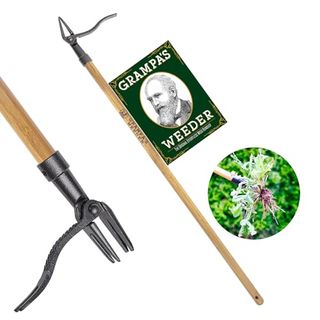
This is a classic standing weeder. The bamboo shaft is lightweight but strong, and the metal claw easily grips tough weeds and pulls them from the soil.
3. Patio knives are great for gaps in pavers
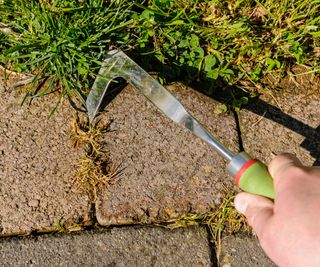
Patio knives - also known as crack weeders - excel at a single task. They are by far the best too for removing weeds from pavers. These weeders are designed to fit between paving slabs on patios and scoop up weeds and moss. They are by far the best tool for the job, though you can also use a hori hori knife. On top of that, you can find long-handled crack weeders like this Sneeboer crack weeder at Garden Tool Co, which saves you from working on your hands and knees.
However, they have limited utility in the rest of the garden. Valeria Nyman says 'Crack weeders are perfect for those annoying weeds between pavers, but kind of useless elsewhere. Tammy Sons agrees. 'Crack weeders excel at removing weeds from pavement and brickwork yet fail to perform well in open garden beds'
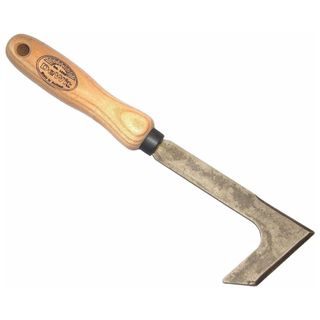
Patio knives are simple and Dewit's is no exception. It has an ash handle for strength and flexibility, and a durable boron steel head for working into cracks between pavers.
4. Dandelion weeders are best for dandelions - and little else
Dandelion weeders are very straightforward. Like a traditional weeder, they consist of a small hand tool with a long metal shaft ending in a fork. This design allows them to hit deep roots. Valeria Nyman explains that 'Dandelion weeders kind of stab deep into the soil to pry up taproots, but if you miss even a little, that dandelion will regrow.'
On top of that, this type of weeder only works on weeds with deep taproosts like dandelions, but won't work on weeds with shallow roots like chickweed. Tammy Sons says 'Dandelion weeders handle deep taproots well but have limited effectiveness against different weed species. '
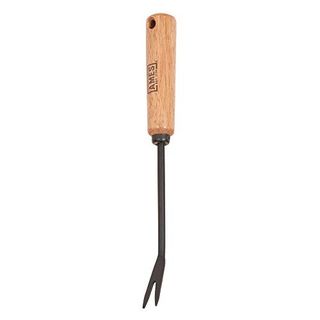
This simple 12-inch dandelion weeder is the archetype of the design. It has a sturdy metal shaft perfect for spiking dandelion roots and pulling them from the soil.
5. Use a hoe for lots of shallow weeds
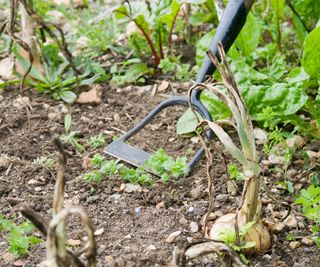
Hoes - whether Dutch with a flat blade or scuffle with a looped stirrup blade - slice weeds just below the surface of the soil. This makes them incredible at removing large amounts of shallow weeds in one go. The drawback is that they can be hard to maneuver in tight spaces and struggle to tackle tough or grown weeds.
Valeria Nyman says 'Dutch hoes and scuffle hoes slice weeds just below the soil surface, which is ideal for large beds but tricky in tight rows.' Tammy Sons agrees and says 'Dutch hoes and scuffle hoes excel at removing young weeds from loose soil yet show limited results against mature weeds.'
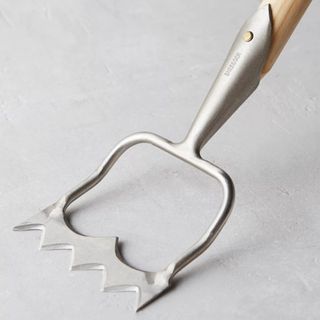
Sneeboer's Royal Dutch Hoe became an instant classic from its launch more than a decade ago. The unique tines on the blade mean it is much more effective than the typical Dutch hoe, and the angled handle reduces the strain on your back and lets you strike deeper into the soil.
6. Snake or hook weeders
Snake (also known as hook weeders) hook into the ground to lift up weeds, like a traditional hand weeder in reverse. You hook it in behind weeds to lift them out of the ground. It works well on all types of weeds and allows for precise, close-up work. Valeria Nyman says 'Hook or snake weeders work more surgically. They're great for precision weeding in crowded gardens.'
However, like a traditional hand weeder, it can be a little hard on your back, and it's not always effective on hard or rocky soil. On top of that, they need a little getting used to. Tammy Sons says 'Although hook and snake weeders efficiently clear stubborn roots, they require practice to use properly.'
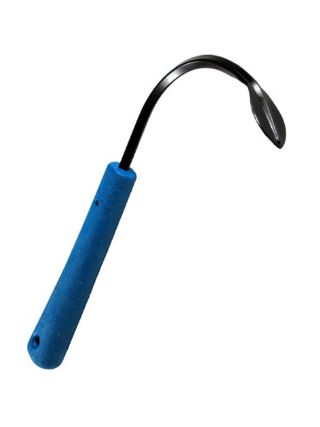
The original snake weeder, the Cobrahead has something of a cult following. Made in the USA from forged steel and recycled plastic, this versatile weeder is great for hooking weeds out of the ground.
7. Try a hori hori on tough roots

Hori hori knives are a cult favorite among gardeners. These clever knives are often used for a variety of garden tasks, but they excel at tackling tough roots.
Valeria Nyman says 'Hori hori knives are versatile and tough, perfect for root-prying jobs.'
However, they're much less effective for shallow weeds or big weeding jobs. Tammy Sons says 'I prefer the hori hori knife for hard roots and various tasks, but it doesn't work well for extensive weed removal'
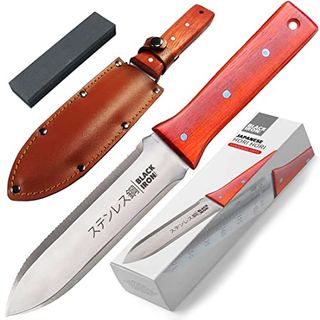
This is a classic hori hori, but the best feature is that it comes as a set. Not only does it feature the knife, but it also comes with a sheath and sharpening stone to help you maintain your tool.
8. A hand hoe is great for working in flowerbeds
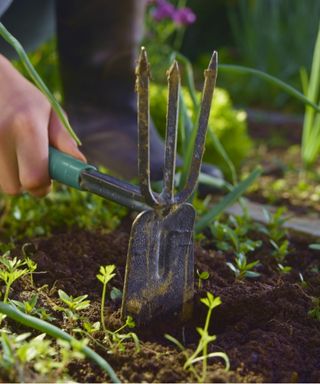
Hand hoes work in a similar way to a snake weeder, chopping through weeds from the back to dig them out of the soil. There are two main types; traditional hand hoes, which usually have a simple hoe blade on one side and a garden for on the other, and Japanese hand hoes, which look like sickles but work in the same way.
However, while good for working in flowerbeds or clearing large amounts of weeds, they struggle with weeds like dandelions. Tammy Sons says 'Traditional hand hoes and Japanese hand hoes cut through weeds well but need significant force to extract deep roots.'
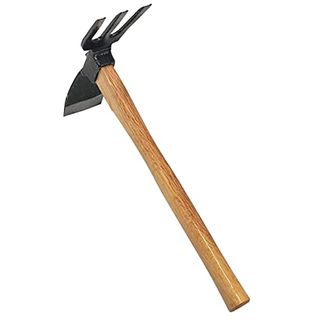
A perfect example of a hand hoe, this heavy Kakuri hoe has two types of blades for a variety of weeding and cultivating.
9. Use the rare wrotter to stab the worst weeds
Perhaps the rarest type of weeder is Sneeboer's wrotter. This tool is essential just a spike with a hook, designed to be pushed deep into soil to push through dense soil, spike a tough root, and pull it out with the hook. Valeria Nyman says 'Wrotters are a rare but useful tool, built to extract weeds from compact soil without too much disturbance.'
However, just like a dandelion weeder, this tool is less effective for tackling dense weeds. Tammy Sons says 'The wrotter works well for precise weed removal in confined spaces but becomes impractical when used in larger areas.'
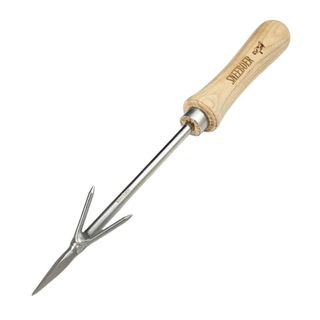
A unique tool, Sneeboer's wrotter is perfect for spiking into unwanted weeds and pulling them out whole. The handle is FSC-certified ash or cheery wood, but it's fairly expensive for a manual tool.
10. Avoid flame weeders
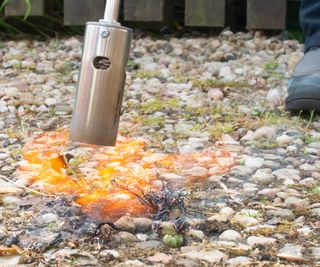
The final type of weeder is a flame or thermal weeder. These are exactly as they sound; they burn weeds. This sounds like it should be effective, but it's one of the worst weeding methods.
First, it needs a lot of care. 'Tammy Sons says 'Weed removal with propane and electric burners provides a chemical-free solution that needs careful handling to protect surrounding plants.' A mistake with a flame weeder can be catastrophic - the best case scenario is that you singe one of your plants, and the worst is that you burn down your garden.
On top of that, they don't always work. Unlike the tools above, which remove weeds by the root, thermal weeders only burn the plant above the surface of the soil. These weeds can't tough the roots, so perennials with deep roots, especially dandelions, will probably return.
Valeria Nyman says these weeders are a 'parlor trick.' According to Valeria, they are 'More fun than functional - unless you love the smell of roasted dandelions.'
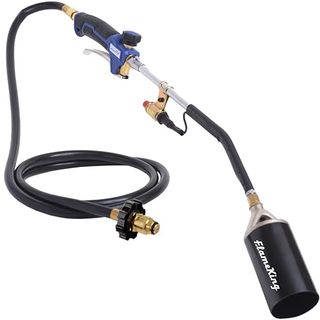
This burner is easy to attach to a propane tank, but you need to take great care when you use it.
Weeding is the most efficient way to stop weeds, but you also have some clever horticultural options, too. There are plenty of ground cover plants that stop weeds and lots of native plants that stop weeds. These plants all prevent weeds from growing in the first place saving you the labor of removing weeds by hand.
Sign up to the Homes & Gardens newsletter
Design expertise in your inbox – from inspiring decorating ideas and beautiful celebrity homes to practical gardening advice and shopping round-ups.

As a gardens and lifestyle contributor, Alex makes sure readers find the right information to help them make the best purchase. Alex got his start in reviewing at the iconic Good Housekeeping Institute, testing a wide range of household products and appliances. He then moved to BBC Gardeners’ World Magazine, assessing gardening tools, machinery, and wildlife products.
You must confirm your public display name before commenting
Please logout and then login again, you will then be prompted to enter your display name.
-
 Tour a tall, narrow townhouse that creates cohesion between its many floors
Tour a tall, narrow townhouse that creates cohesion between its many floorsIn this five-floor, mid-terrace townhouse in London, interior designer Lara Bates used color as a unifying force with injections of pattern to create a sophisticated but relaxed family home
By Pip Rich Published
-
 I'm doing these 5 things to transition my indoor plants out of winter – experts say this essential spring houseplant care will ensure a thriving indoor jungle
I'm doing these 5 things to transition my indoor plants out of winter – experts say this essential spring houseplant care will ensure a thriving indoor jungleHelp your plants recover from any winter damage and support them out of dormancy with these easy and quick tasks
By Tenielle Jordison Published